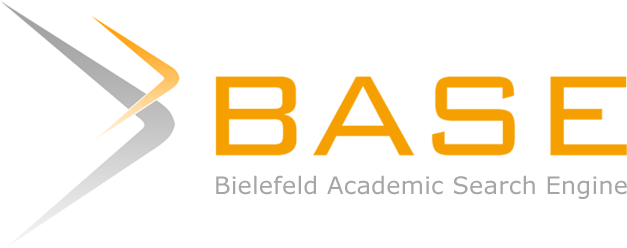Design and validation of a diagnostic test instrument for identifying misconceptions in basic physics
Abstract
Misconceptions are a classic problem experienced by students in learning which can affect academic achievement, and difficulty understanding advanced physics concepts, and this has the potential to inherit the same mistakes when students become teachers. The unavailability of instruments to identify misconceptions makes it difficult for lecturers to explore student misconceptions, so it is necessary to develop a set of diagnostic test instruments. This research aims to design and test the feasibility of a three-level diagnostic test instrument which will then be used as a tool to identify student misconceptions in the Basic Physics course. This research method is research and development (R&D) of the Plomp model with stages: 1) preliminary investigation, 2) design, 3) realization/construction, 4) testing, evaluation, and revision, and 5) implementation. Data collection techniques use questionnaires and tests, with research instruments in the form of validation sheets and diagnostic test questions. The content validity data analysis technique uses a percentage scale of feasibility categories based on expert judgment and construct validity testing using item analysis software version 2.03. The results of testing the feasibility of the diagnostic test instrument in terms of content validity obtained an overall percentage of 97.21%, while the construct validity test found that 75% of the questions were suitable for use. Thus, it can be concluded that the diagnostic test instrument that has been designed is suitable for use and makes a significant contribution to identifying student misconceptions, as well as helping to improve the quality of education, especially in physics learning, and supporting better academic goals.
Keywords
Full Text:
PDFReferences
Achor, E. E., Ellah, B. O., & Omaga, J. O. (2022). Misconceptions and Difficult Concepts as Determinant of Students’ Academic Engagement and Retention in Physics. Jurnal VARIDIKA, 1(1), 42–52. https://doi.org/10.23917/varidika.v1i1.17660
Ananda, L., & Syuhendri, S. (2021). Miskonsepsi mahasiswa calon guru fisika pada mata kuliah ipba materi periode orbit bulan mengelilingi bumi. Prosiding Seminar Nasional Pendidikan IPA Tahun 2021.
Conforme, D. F. I., Romero, A. L. C., Romero, D. C., & Laz, E. M. S. A. (2019). Application of diagnostic assessment on beginning school year. International Research Journal of Management, IT and Social Sciences, 6(5), 53–59. https://doi.org/10.21744/irjmis.v6n5.701
Damayanti, Y. D., & Priatmoko, S. (2023). Pengembangan instrumen tes diagnostik three-tier multiple choice test (ttmct) untuk menganalisis miskonsepsi siswa pada konsep sifat keperiodikan unsur. Chemined, 12(2), 125–130. http://journal.unnes.ac.id/sju/index.php/chemined
Esomonu, N. P.-M., & Eleje, L. I. (2020). Effect of Diagnostic Testing on Students’ Achievement in Secondary School Quantitative Economics. World Journal of Education, 10(3), 178. https://doi.org/10.5430/wje.v10n3p178
Izza, R. I., Nurhamidah, N., & Elvinawati, E. (2021). Analisis Miskonsepsi Siswa Menggunakan Tes Diagnostik Esai Berbantuan Cri (Certainty of Response Index) Pada Pokok Bahasan Asam Basa. Alotrop, 5(1), 55–63. https://doi.org/10.33369/atp.v5i1.16487
Mardapi, D. (2019). Psikologi Pengukuran Pendidikan. PT Remaja Rosdakarya.
Maryam, E. (2020). Identifikasi Miskonsepsi Menggunakan Three-Tier Diagnostic Test Berbasis Google Form pada Pokok Bahasan Potensial Listrik. Silampari Jurnal Pendidikan Ilmu Fisika, 2(2), 149–162. https://doi.org/10.31540/sjpif.v2i2.1083
Neidorf, T., Arora, A., Erberber, E., Tsokodayi, Y., & Mai, T. (2019). Student Misconceptions and Errors in Physics and Mathematics. In IEA Research for Education (Vol. 9).
Nisa, K., & Sudrajat, A. (2023). Pengembangan Instrumen Tes Diagnostik Five-Tier untuk Mengidentifikasi Miskonsepsi Siswa Kelas XI pada Materi Laju Reaksi. PENDIPA Journal of Science Education, 7(2), 127–136. https://doi.org/10.33369/pendipa.7.2.127-136
Nugroho, D., Wirawan, W., Febriantania, P., & Ridaningsih, I. (2023). A Sistematic Literature Review : Implementasi Asesmen Diagnostik pada Kurikulum Merdeka. Jurnal Pendidikan Islam, 9(2), 50–61. https://doi.org/10.37286/ojs.v9i2.197
Nurhafsari, A., & Rismaningsih, F. (2023). Pengembangan Instrumen Four Tier Diagnosti c Test Berbasis iSpring Suite 9 Untuk Mengidentifikasi Pemahaman Konsep Pada Mahasiswa. Jurnal Pendidikan Borneo (Borju), 5(2), 245–259. https://garuda.kemdikbud.go.id/documents/detail/3692163
Plomp, T., & Nieveen, N. M. (2010). An introduction to educational design research.
Raflah, N., Salasi, & Umam, K. (2021). Analisis Miskonsepsi Siswa pada Materi Logaritma di SMA Negeri 5 Banda Aceh. Jurnal Peluang, 9(2), 1–8. https://doi.org/10.24815/jp.v9i2.26339
Resbiantoro, G., Setiani, R., & Dwikoranto. (2022). A Review of Misconception in Physics: The Diagnosis, Causes, and Remediation. Journal of Turkish Science Education, 19(2), 403–427. https://doi.org/10.36681/tused.2022.128
Saputra. (2021). Pengembangan Bahan Ajar Sejarah Berbasis WEB. YLGI.
Sugiyono. (2017). Metode Penelitian Pendidikan Pendekatan Kuantitaif, Kualitatif, dan R&D. Alfabeta.
Sutiah. (2020). Optimalisasi Fuzzy Topsis: Kiat meningkatkan prestasi belajar mahasiswa. Nizamia Learning Centre.
Tika, P. N., Jariah, Y. A., Melina, M. M., Ristanto, R. H., & Isfaeni, H. (2023). Pengembangan Instrumen Tes Diagnostik Three-Tier Pada Pembelajaran Sistem Ekskresi Berdiferensiasi. Bio-Lectura : Jurnal Pendidikan Biologi, 10(2), 167–182. https://doi.org/10.31849/bl.v10i2.14610
Wahyudi, F., Didik, L. A., & Bahtiar, B. (2021). Pengembangan Instrumen Three Tier Test Diagnostik Untuk Menganalisis Tingkat Pemahaman Dan Miskonsepsi Siswa Materi Elastisitas. Relativitas: Jurnal Riset Inovasi Pembelajaran Fisika, 4(2), 48. https://doi.org/10.29103/relativitas.v4i2.5184
Wiyartiningtyas, L. P., & Haryani, F. F. (2023). The Advantages of Diagnostic Tests for High School Students in Physics Learning: A Literature Review. Atlantis Press SARL. https://doi.org/10.2991/978-2-38476-060-2_10
Yulianawati, D., Wahyuningsih, A., & Pebriana, N. A. (2022). Pengembangan Instrumen 4TSDT (Four Tier – Science Diagnostic Test) untuk Mengidentifikasi Level Konsepsi Calon Guru Sekolah Dasar. Jurnal Basicedu, 6(6), 9483–9490. https://doi.org/10.31004/basicedu.v6i6.4117
Yusrizal, & Rahmati. (2020). Tes Hasil Belajar. Bandar Publishing.
DOI: https://doi.org/10.31764/orbita.v11i1.27782
Refbacks
- There are currently no refbacks.

This work is licensed under a Creative Commons Attribution-ShareAlike 4.0 International License.
______________________________________________________
ORBITA: Jurnal Pendidikan dan Ilmu Fisika
p-ISSN 2460-9587 || e-ISSN 2614-7017
This work is licensed under a Creative Commons Attribution-ShareAlike 4.0 International License.
EDITORIAL OFFICE:


























